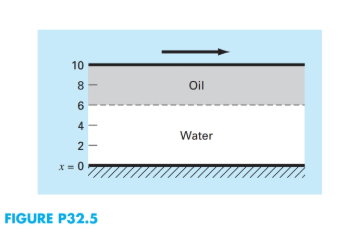
Two plates are 10cmapart, as shownin Fig.P32.5. Initially, both plates and the fluid are still. At
and the following relationships hold true at the oil-water interface:
What is the velocity of the two fluid layers at

Want to see the full answer?
Check out a sample textbook solution
Chapter 32 Solutions
Numerical Methods For Engineers, 7 Ed
- 1. Let R and b be positive constants. The vector function r(t) = (R cost, R sint, bt) traces out a helix that goes up and down the z-axis. a) Find the arclength function s(t) that gives the length of the helix from t = 0 to any other t. b) Reparametrize the helix so that it has a derivative whose magnitude is always equal to 1. c) Set R = b = 1. Compute T, Ñ, and B for the helix at the point (√2/2,√2/2, π/4).arrow_forwardb) An aircraft is performing a steady manouevre in level flight (horizontal plane). Indicated body rates (p, q, r) are (0,1.5, 2.6) degrees per second. Calculate the Euler yaw rate v and the aircraft roll and pitch attitudes o and 0. (101arrow_forwardPlease solve the question in picture .arrow_forward
- Algebra & Trigonometry with Analytic GeometryAlgebraISBN:9781133382119Author:SwokowskiPublisher:Cengage
